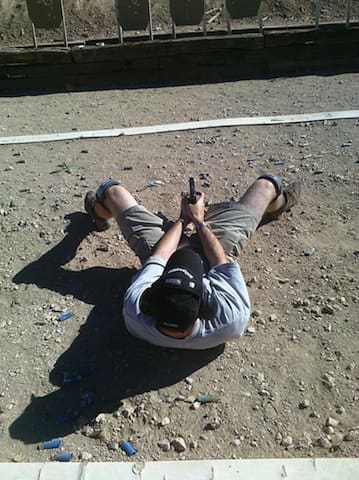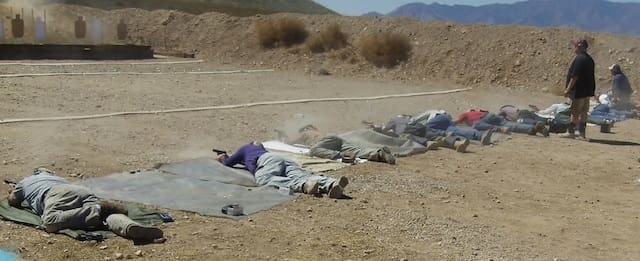[Click here to read for Part I of this series]
Roy Rogers had his Trigger. So do you. The cowboy’s horse was probably a lot more controllable (and less temperamental) than the finger you use to fire your gun. As my instructors at the MAG 80 training program taught me, trigger control accounts for 90 percent of shooters’ accuracy problems. And so Massad Ayoob’s stand-in Marty Hayes started our week with some focus drills emphasizing the importance of trigger reset and follow through. First task: see who could take the most time to press, and then release, their trigger. You’d be amazed at how much concentration learning how not to concentrate on your finger requires. And then . . .
We spent the next two days working on speed for draws and re-loads, rapid-fire strong and weak hand, and blending speed and accuracy from 4-15 yards. We spent so much time training our muscle memory that we got brain cramps on a regular basis. At which point we had to slow down to speed up. On the third day, we broke out the tarps and bed rolls for 20 and 40-yard prone shooting. Even when your front sight is nearly the same size as the target, it’s really not too difficult to keep most of your shots in the A-zone.
Marty finished up his stint as lead instructor with a practice run for Friday’s final test. I greatly appreciated this ballistic brush-up; I was a little concerned about the pace I would need to run my revolver if I was going to keep up in the double-speed qualification. I totally rushed it and flushed about 10 shots down the crapper with plenty of time to spare. That was good to know.
When Mas arrived on Thursday we dove right in to weak-hand draws around the front and back. From there we covered one-hand reloads with either hand. Yet another reason for using a holster that stays open when you draw. With the use of only one hand, you need the holster to hold your gun while you snap in a fresh mag.
No part of my body went unused for the lefty-only revolver reload. Brace the butt against the layer of fat that covers my 300 abs, shift it in my left hand and open the cylinder. Eject with the thumb and stuff the barrel in my waistband, open cylinder over the belt. Grab and insert six (yes six) rounds one or two at a time, or pop in a speed loader. Pull out your piece, flop it shut, and you’re good to go. You’re sure as heck not going to win any matches this way, but you CAN get reloaded.
One-handed drills are not as fanciful as some make them out to be. One of our classmates was recovering from surgery to his left shoulder. He shot the entire course with limited use of his non-dominant arm. Any one of us could find themselves in a cast or sling leaving us with only one good arm overnight. Not to mention the fact that many gunfighters get weapons-oriented tunnel vision, and shoot their opponent’s dominant hard or arm.
We ended the day with “Wounded Officer” drills. These simulate shooting while laying on your back or side. We used a variety of supported and free-hand techniques. Whether you are knocked to the ground in a fight, or literally caught napping, these skills should be hardwired for quick access in an emergency. Plus it was good fun to see 20 of your friends rolling around in the dirt like a pack of coyotes.






The first picture reminds me of a scene from Debbie Does Dallas.
I don’t wanna see the money shot!
Nonsense, he got to spread his legs AND shoot his load at the same time. PRIME-TIME.
Hey, don’t forget that Bo, the “wounded shooter,” smoked EVERYBODY in the “Long Gun Races” on Day 5, shooting an M4-style AR ONE-HANDED!
Phil, you are supposed to say “Spoiler Alert”. hahahaha
OK – “Spoiler Alert.” Happy now?
Comments are closed.